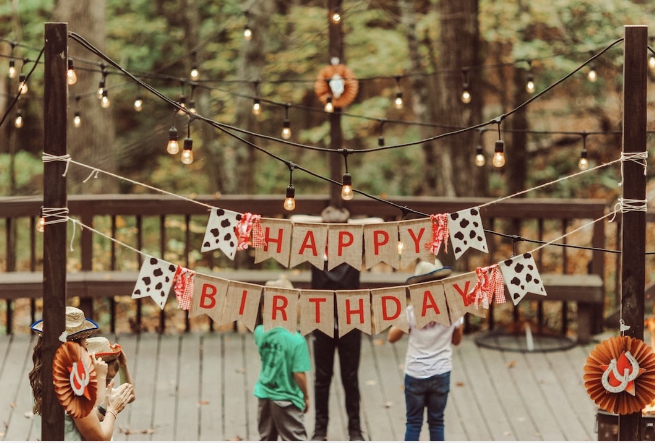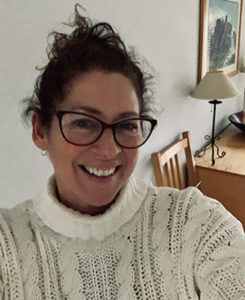
In every home, whether mindfully created, a default reaction or natural happenstance, a healthy family life moves to a steady beat of rhythms, routines and rituals. They comprise all the activities and patterns each family member performs daily, weekly, monthly and seasonally through the year. It is worth the investment to create healthy patterns for family life as rhythms, routines and rituals will bring worthwhile rewards through the decades. A few examples of these familial patterns are: when and where a family sits down to dinner, bedtime regimens and how holidays are recognized. Rhythms, routines and rituals bestow security to family members and play an integral part within each family’s unique culture.
Children and adults thrive when reliable family rhythms, routines and rituals are in place. They provide a subtle yet secure undercurrent supporting family life. The more consistent they are, the more enjoyable family life will be. When out of kilter, absent or interrupted, family members may feel unsettled or realize a day, week or holiday may not fulfill their expectations. Let’s take a look at each of these components and acknowledge the comfortable flow rhythm, routine and rituals provide within family life.
Rhythms
Rhythm is defined as a strong, regular, repeated pattern of movement. Family rhythms such as – each morning a child wakes up, immediately goes into mom and dad’s room then everyone goes to the kitchen for breakfast – describes one family’s regular morning pattern. Once created and established, family rhythms may occur unnoticed. Yet, rhythms are the pulse of family life. Bigger than one day or one year, rhythms establish a feeling of dependability in the home. When daily rhythms are set in place and working well, family members move through the day together like a dance.
Family rhythms often follow a natural sense of time. Daily rhythms respond to sunrise, hunger, energy for play, school or work. They are followed by a desire to be at home, hunger again, sunset and a need for rest. This rhythmic flow moves into bedtime when the reliable daily cycle begins again. Rhythms also offer a dynamic easing through the year’s cycle. Autumn begins to slow things down, winter offers more rest time, spring picks up the energy again, and summer invites later bedtimes. When reliable family rhythms are established, a home will rest like a house’s foundation.

Routines
Slightly more distinct than rhythm, routine is defined as a sequence of actions regularly followed. Routines create a reassuring rhythm and provide a sense of comfort. The simple routines of regular family dinnertime as well as reading time, Saturday chores and children’s hour fall under this category. Families can make the most of these patterns by savoring valuable time together. Family time is precious time. If a parent does get busy, they can make it quality time over quantity time.
Other advantages of establishing family routines is they help create healthy habits and encourage children’s independence. When they know what is expected of them, children can initiate their own actions and perform with confidence. This makes for a more peaceful, happy home life. Family routines create the structure of family life just as the framework of a house provides support and shape.
Rituals
Let’s now consider what makes an action a ritual as opposed to a routine. The difference is the care and intention behind the experience. While routines are actions that need to be done, such as bath time or making the bed, rituals are the more meaningful practices performed with a sense of purpose and enjoyment. Rituals are the individual formulas each family follows when celebrating events through the year such as birthdays, holidays, the first day of school or religious observances.
I have heard it said that a pattern or way of marking a special day needs only be practiced twice in a row for it to become a family ritual or tradition. Often in children’s minds, twice is enough for it to be something they now anticipate. In our family, the Christmas ritual of lining up youngest to oldest and marching down to the tree has been practiced for over twenty years!
Parents can build their family culture with rituals. When choosing what to incorporate as a family ritual, parents will consider personal beliefs, goals, values, dreams and priorities. The beauty of this is that each family will be unique. On a yearly calendar, rituals gift a bright sparkle marking special occasions and creates anticipation for an exciting change to daily rhythms and routines. Just as a house’s decor adds variety, interest and individuality, established family rituals gift special moments shining in the distance.

Family Bonding
As parents put into place, add, take away or let go of some practices as the family grows, rhythms, routines and rituals create family identity and the important sense of belonging for family members. Children feel loved and secure as these positive family bonds are built. The investment of quality time, communication, teamwork as well as an appreciation of each other offers rich rewards. When a house is filled with the warmth of family rhythms, routines and rituals, what is created is not just a dwelling but a home.
Written by Janet Nicole Meyer for Golden Days at Home

Twelve Kinds of Ice by Ellen Bryan Obed
A joyful, happy book to share with your child, especially during the deep days of winter. A fun family just can’t wait to ice skate in their own front yard. They wait for the first ice, the second ice, the third ice and the perfect ice! In all, twelve kinds of ice are beautifully illustrated by the award-winning Barbara McClintock.



4 Responses
This is something I’ve been thinking about a lot lately! I really enjoyed this article, thanks!
Thank you for your kind comment. I’m so glad you enjoyed this look at a beautiful family subject. When we are aware of the strength of these familial patterns, as parents we can address changes, additions, subtractions and improvements to the flow of family life.